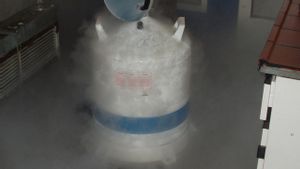JAKARTA - The technology to make living robots seems to be a solution to some technical problems, because they will build themselves. New Scientist reports that researchers at Harvard University, Tufts University and the University of Vermont have learned that their artificial frog cell-based Xenobots can reproduce on their own.
Custom organisms can collect "hundreds" of individual cells in their plates to spontaneously assemble a growing baby bot within a few days. Because this is happening over and over again, people can use this reproduction to collect robots that humans might need to deliver drugs, remove microplastics from rivers, or complete tasks on a small scale.
The replication method is as important as the bot itself. Cells would normally develop into tadpole shells, but the computer-designed mixture of cells instead used the "kinematic" (motion-based) replication normally seen only with molecules.
No animal or plant is known to reproduce this way, according to lead researcher Sam Kriegman, as reported by J. Fingas of Engadget. Because this robot effectively violates the 'rules' of biology.
The researchers are aware of the technical and ethical issues with robots that copy themselves without prompting. The team's goal is to understand self-reproduction and learn how to "control it, direct it, extinguish it, exaggerate it," according to project co-leader Joshua Bongard, quoted by Engadget.
Honing this development in a tightly controlled laboratory can lead to carefully managed growth. That, in turn, could lead to regenerative medicine and anti-pollution tools previously impossible for humans.
The English, Chinese, Japanese, Arabic, and French versions are automatically generated by the AI. So there may still be inaccuracies in translating, please always see Indonesian as our main language. (system supported by DigitalSiber.id)








